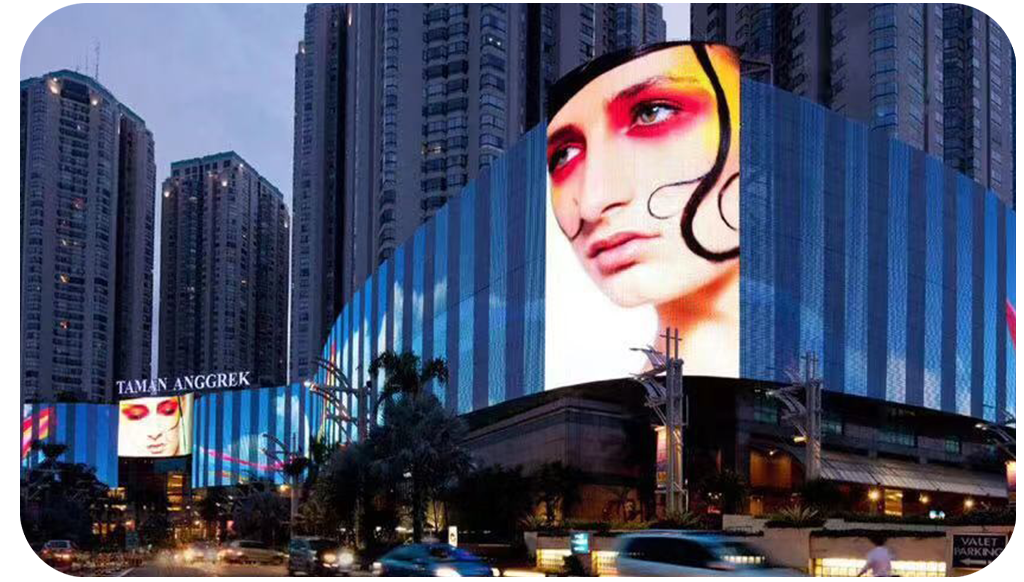It’s impossible not to notice the impact of LED screens on the outdoor environment as we move into 2025: they are fixed in bulk to the sides of buildings, street furniture, roadside billboards and stadiums. You may even have seen the screens being towed by vehicles or on the side of lorries.
When you consider the many advantages of LED screens over traditional signage, the rapid advancement of digital screens in outdoor landscapes is not surprising: they are bright and clearly visible in all weather conditions, and the dynamic multimedia content can always be kept fresh and relevant.
In the majority of cases, LED displays are now the default choice for out-of-home (OOH) advertisers because they provide an excellent return on investment. If you are considering upgrading from static signage to a digital screen, but are unsure if the initial greater upfront cost will pay off, here are some points to consider.
Attention-grabbing visuals
Above all else, LED screens and video walls are highly visible, attracting attention even in a crowd and from long distances. LEDs have a very high level of brightness and can display vibrant colours with deep contrast, which cannot be matched by other types of lighting or by printed materials.
The screens can also display high resolution images with crystal clear clarity, so the meaning of the image or text can be grasped in one quick glance. This is crucial for advertisers, because research shows that most people only glance at a sign for two or three seconds before moving on if they find nothing to quickly comprehend.
24/7 visibility
The high brightness levels mean that the screens remain easily visible even in direct sunlight or dull cloudy conditions. Auto-adjustment technology allows the brightness to adapt to the external light levels, so whether it’s nighttime, twilight, noon, sunshine or rain, the screen will always have optimal visibility.
Traditional static signage is either invisible at night, or lit by overhead lighting that gives an uneven distribution of light, cannot adjust to the environmental conditions, and requires regular maintenance.
Dynamic content
When it comes to the versatility of content, LED displays are unrivalled. They can allow advertisers to choose from animation, video, or rotating content, which are instantly more engaging than traditional static signage. The eye is automatically drawn to moving images, so OOH advertisers often make use of dynamic content to increase audience engagement.
Furthermore, screen space can be rented out to other advertisers, as the content can be rotated at regular intervals. This can help to recoup the initial investment in the screen, and provide a lucrative extra source of income. It also keeps the content fresh and interesting so the screen doesn’t just become another item of street furniture.
If you are using LED screens in bulk, a centralised content management system means that you can easily control the content of several screens in different locations with a few simple actions.
Real-time updates
For many OOH advertisers, the game-changer of LED screens is the ability to display targeted real-time messages. This means that marketers can create precisely tailored campaigns to ensure that their messages are in front of the most relevant audience and at the most opportune time.
For example, a fast food restaurant that wants to promote breakfast meal deals to office workers can programme advertisements to display at transport hubs near to the outlet between 7am and 10am on weekday mornings. At the weekend, the times could be adjusted to encourage shoppers to call in for mid-morning coffee.
Making use of data-driven insights
Yet another huge advantage of LED screens for OOH advertisers is the ability to obtain measurable results from an advertising campaign. This allows them to accurately calculate the return on investment and make adjustments to optimise the campaign in the future.
For example, digital metrics can be used to track views per advert, and any interaction such as clicks through on QR codes.
Compatibility with emerging technologies
Digital technology is transforming the world at a rapid rate, and the most advanced LED screens are compatible with impressive features such as AI integration for predictive content delivery, head-turning 3D image display, touch screen interactivity and augmented reality displays for immersive audience experiences.

